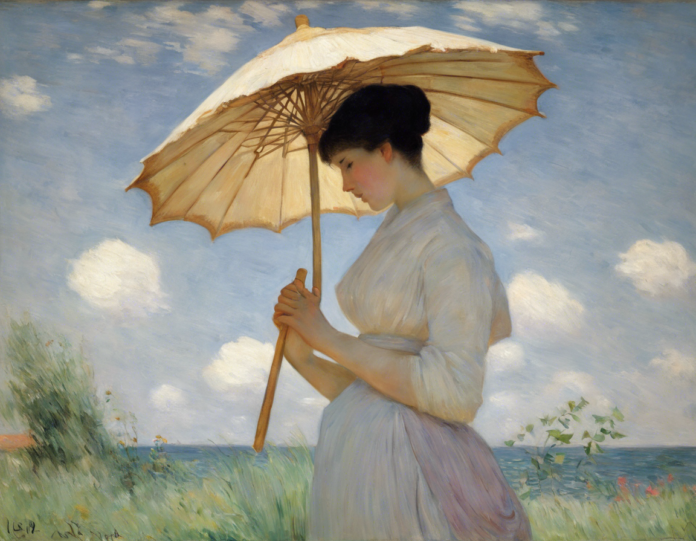When it comes to capturing the essence of light in art, there are few paintings as iconic as “Woman with a Parasol” by Claude Monet. This masterpiece, painted in 1875, is a perfect example of how a skilled artist can use light to evoke emotion, create depth, and bring a scene to life. In this blog post, we will delve into the significance of light in this painting, explore the techniques Monet used to capture it so brilliantly, and discuss why this work continues to captivate audiences around the world.
The Significance of Light in “Woman with a Parasol”
Light has always been a central theme in art, but Monet took its importance to a whole new level. In “Woman with a Parasol,” the play of light and shadow creates a sense of movement and life in the painting. The way the sunlight filters through the parasol, casting dappled shadows on the woman’s face and dress, gives the scene a dynamic quality that draws the viewer in. The contrast between light and dark also helps to define the shapes and forms in the painting, adding to its depth and realism.
Techniques Used by Monet to Capture Light
Monet was a master of capturing the effects of light in his paintings, and “Woman with a Parasol” is no exception. One of the techniques he used to achieve this was “plein air” painting, which involved painting outdoors to capture the changing light and colors of nature. By working directly from life, Monet was able to observe how light interacted with his subjects and replicate those effects in his paintings.
Another technique Monet used in “Woman with a Parasol” was “Impressionism.” This artistic movement, of which Monet was a central figure, focused on capturing the fleeting effects of light and atmosphere. Instead of trying to create a perfect, detailed representation of the scene, Monet used loose brushstrokes and vibrant colors to suggest the play of light on his subjects. This gives the painting a sense of spontaneity and movement that is characteristic of Impressionist art.
Why “Woman with a Parasol” Continues to Captivate Audiences
Over a century after it was painted, “Woman with a Parasol” continues to captivate audiences with its luminous beauty and sense of life. The dynamic composition, with the woman and child caught in a moment of movement, gives the painting a sense of vitality and energy that is hard to resist. The play of light and shadow, combined with Monet’s bold use of color, creates a sense of atmosphere and mood that transcends time and place.
Another reason why “Woman with a Parasol” remains so popular is its universal appeal. The scene of a woman and child walking in the countryside is one that resonates with viewers from all walks of life. The sense of freedom and joy in the painting is something that people can relate to and find comfort in, making it a timeless masterpiece that speaks to the human experience.
In conclusion, “Woman with a Parasol” is a shining example of how an artist can use light to create depth, emotion, and movement in a painting. Through his masterful techniques and keen observation of the natural world, Monet was able to capture the ephemeral beauty of light in a way that continues to inspire and delight audiences to this day.









